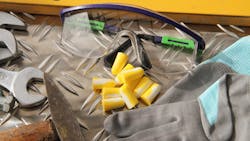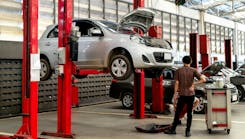6 steps to prevent hearing loss on the job
Unlike more obvious injuries like cuts or lacerations, hearing loss can be harder for workers to detect and easier for them to dismiss. In fact, a study by the University of Michigan School of Nursing reported that workers with measurable hearing damage often reported their hearing as “excellent.”
But hearing loss is one of the most common occupational illnesses in manufacturing, accounting for one in nine recordables each year. And to make matters worse, hearing damage is permanent.
To help keep your workers safe, follow these six hearing loss prevention tips.
1. Order a noise assessment for your entire facility
Remember that you need to reassess specific areas any time you make significant changes or additions to your facility to ensure you’re providing the right hearing protection. A quality safety assessment will identify places you might reduce noise and make recommendations for PPE.
2. Determine the proper hearing protection for workers in every part of your facility
Are simple earplugs enough? Should you add full earmuffs for some jobs? What else might workers need? Combination products like hard hats or welding helmets with built-in earmuffs may be needed in certain environments. When in doubt, consult a safety specialist.
3. Test individual workers for hearing loss
Have an audiologist test workers every year to ensure that their hearing hasn’t been damaged.
4. Pay attention to comfort when choosing hearing protection
You shouldn’t order just one size of hearing protection any more than you’d order just one size of gloves or boots. Provide a variety of sizes and types to make sure everyone can find hearing protection that’s comfortable for them.
5. Pay attention to fit when choosing hearing protection
Consider asking your safety provider to visit your facility for fit testing. Not only can they advise workers on the best form of protection, but they can also ensure that each worker knows how to properly insert earplugs. You might be surprised at how many of your workers are inserting earplugs improperly or not deeply enough in the ear canal, accidentally increasing their noise exposure.
6. Provide hearing loss prevention training
Be sure everyone knows the importance of hearing protection through training classes, reminder posters, and frequent in-person advice. Make hearing safety an everyday priority – remind and correct your workers when they forget their PPE and consider rewarding those who set a good example.
22 million workers are exposed to potentially damaging noise each year. But following these important steps for hearing protection safety can save your people from lifelong hearing loss – and that should sound like good news to everyone!
Reprinted with permission from Magid.



